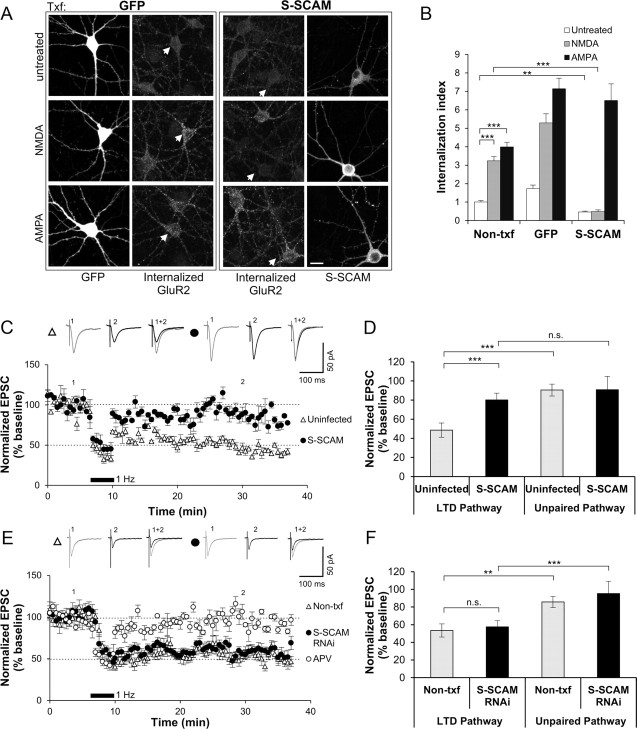Figure 8.
S-SCAM overexpression blocks NMDA-induced AMPAR internalization and induction of hippocampal LTD. A, B, Effect of S-SCAM on AMPAR internalization. GFP or S-SCAM was transfected into hippocampal neurons and their effect on GluA2 internalization was measured by a fluorescence-based antibody-feeding assay. Neurons were stimulated for 2 min with conditioned media (Control), 50 μm NMDA, or 100 μm AMPA. Representative images are shown in A and quantified data are presented in B. Scale bar, 10 μm. n > 25 per condition. ***p < 0.001, **p < 0.01. Scale bar represents 10 μm. C, D, Effect of S-SCAM overexpression on hippocampal LTD. CA1 neurons were infected with sindbis virus-expressing GFP or GFP-S-SCAM. Paired recordings were performed in infected and uninfected nearby neurons. LTD was induced by pairing 200 pulses of 1 Hz stimulation and postsynaptic depolarization at −40 mV. Normalized EPSC traces are shown in C and quantified in D. While uninfected control neurons show normal pathway-specific LTD (LTD vs unpaired pathway, ***p < 0.001, n = 10), LTD induction was blocked in neurons infected with SCAM (p = 0.42, n = 10). E, F, Effect of APV and S-SCAM knockdown on the hippocampal LTD formation. Normalized EPSC traces are shown in E and bar graphs are in F (n = 6 for APV and n = 10 for other conditions).

